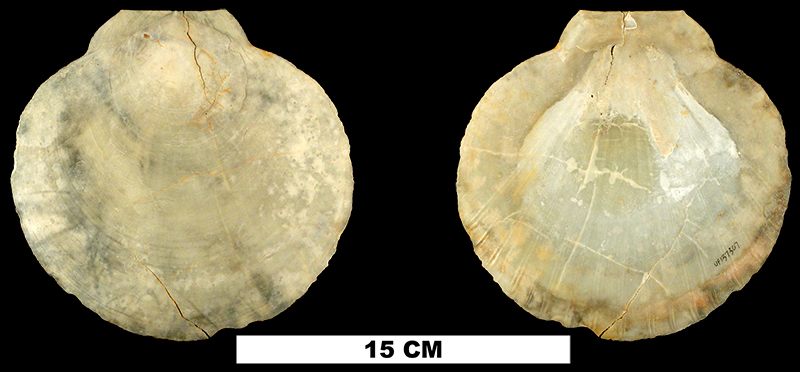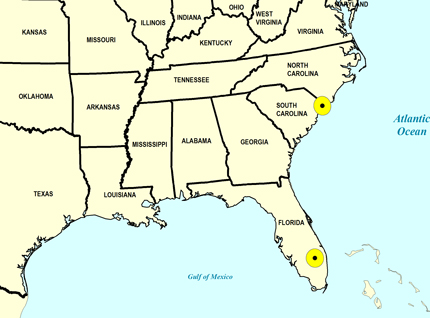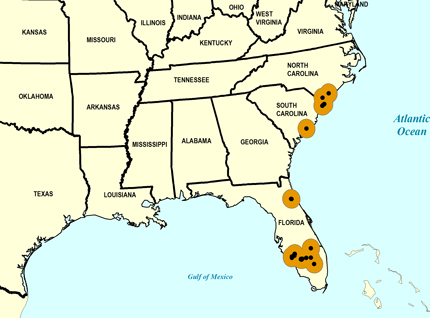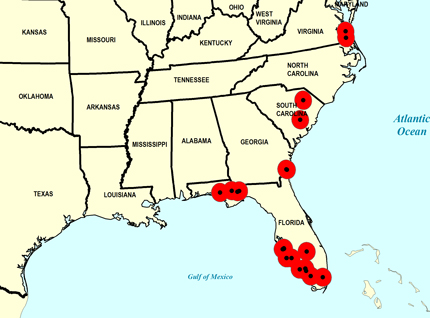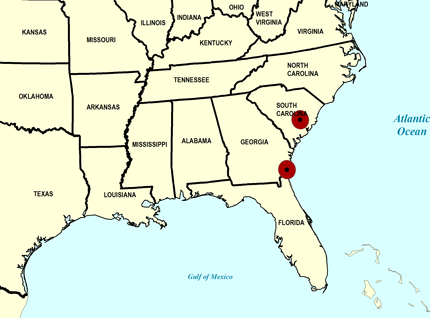
Amusium mortoni
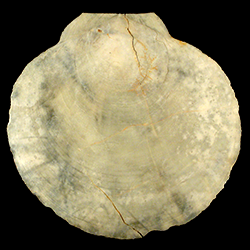
- Phylum: Mollusca
- Class: Bivalvia
- Order: Pectinida
- Family: Pectinidae
- Genus: Amusium
- Species: Amusium mortoni (Ravenel, 1844)
Geological Range
Early Pliocene to Middle Pleistocene; Extinct.
Paleogeographic Distribution
Southern Florida to Virginia.
Remarks
Original Description (from Ravenel, 1844, p. 96):
"Specific character—Orbicular, thin, both valves moderately convex, one more so than the other—outside, with numerous concentric obsolete striae; inside,—with from eighteen to twenty four radiating double ribs, slightly elevated; ears large, sub-equal, striated externally.
This species is nearly allied to the P. pleuronectus and P. japonicus. It is found in the limestone on my plantation, The Grove, in St. Thomas's Parish, about 17 miles from Charleston, and also on Goose creek, at Mr. Henry Smith's, about 7 miles South West from the Grove deposit, and 11 miles from Charleston; Cooper River being between these localities.
This shell is abundant at the Grove, but being large and thin, it is generally broken in getting out the marl, and with the exception of a few small specimens, I have not been able to procure a perfect valve.
The largest specimen in my possession although not perfect, is sufficiently so to determine its size; it is 8.75 inches in diameter.
I take much pleasure in designating this shell by the name of our distinguished Geologist, Dr. Samuel George Morton, of Philadelphia."
To access this description in its original formatting through the Biodiversity Heritage Library, click here.
Stratigraphic Occurrences
- Middle Pleistocene
- Bermont Formation (S. FL)
- Canepatch Formation (SC)
- Early Pleistocene
- Bear Bluff Formation (SC)
- Caloosahatchee Formation (S. FL)
- Nashua Formation (N. FL)
- Waccamaw Formation (SC, NC)
- Late Pliocene
- Duplin / Raysor formations (GA)
- Jackson Bluff Formation (N. FL)
- Raysor Formation (GA, SC)
- Tamiami Formation (S. FL)
- Tamiami Formation (Lower) (S. FL)
- Tamiami Formation (Ochopee Limestone) (S. FL)
- Tamiami Formation (Pinecrest Beds) (S. FL)
- Yorktown Formation (VA)
- Early Pliocene
- Goose Creek Limestone (GA, SC)
